VZ-9 AVROCAR: THE AIR FORCE’S FLYING SAUCER (CAME FROM CANADA)
- By Alex Hollings
Share This Article
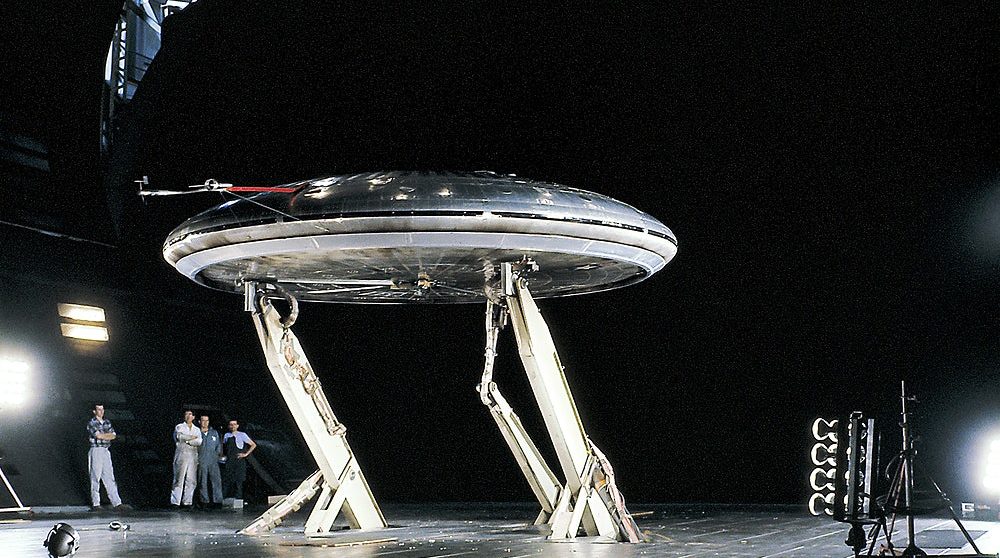
During World War II, British and American aviators were asked to do something no one had ever done before: Hunt down and engage enemy aircraft under cover of darkness. A far cry from night flying in today’s combat aircraft, pilots were left with nothing but a radio and their naked eyes to guide them as they scanned the horizon for inbound bombers.
During this anxious time, pilots reported seeing more than inbound Nazi aircraft, however — on more than one occasion they reported unusual lights that seemed to follow them, even occasionally reacting to their presence. Stories of these strange objects, dubbed Foo Fighters, would take the United States by storm after a piece published by the Associated Press’ Robersons C. Wilson first made the rounds in December of 1944. All at once, America’s love affair with these strange Foo Fighters and subsequent stories about flying saucers was born. Just three years later, a reported saucer crash near the sleepy town of Roswell, New Mexico would once again garner national attention.

A year after that, an Air National Guard P-51 Mustang was dispatched to intercept a flying saucer over North Dakota, and four years after that, flying saucers were spotted flying above the White House, this time prompting the Air Force to launch a bevy of F-94 Starfires to intercept. In the late 1940s and throughout the 1950s, stories about flying saucers weren’t just the crackpot rantings of tin-foil clad conspiracy theorists; they were legitimate concerns among a number of senior defense officials, substantiated by reports coming in from various parts of the nation’s military apparatus.
It’s not surprising, then, that in the 1950’s, the United States and its ally Canada sought to develop a flying saucer of their own: One that could fly at extraordinary speeds and altitudes, hover over battlefields, and dominate the skies for decades to come. The culmination of those efforts was known as the Avro Canada VZ-9 Avrocar.
Designed for a nuclear battlefield by a Canadian firm
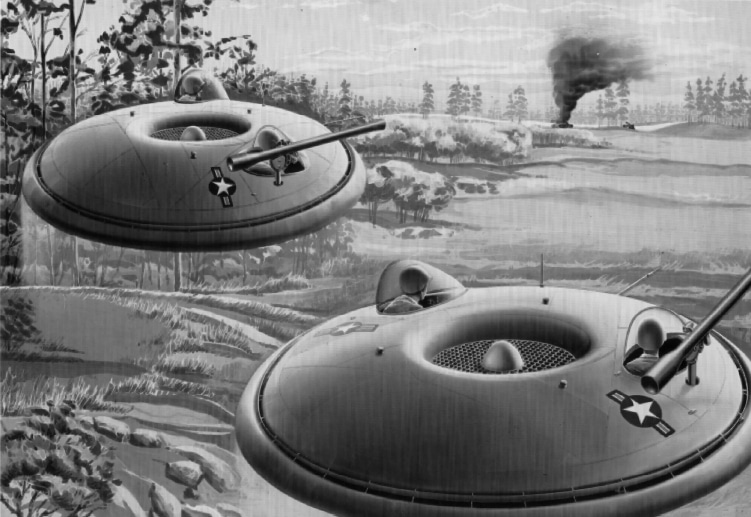
While the pop-culture ties to the flying saucer shape may have had an influence on the Avrocar’s design, it was a burgeoning interest in vertical take-off and landing (VTOL) platforms that may have been the program’s most significant driving factor. America’s atomic bomb attacks on Japan in 1947, followed by the first Soviet atomic tests in 1949, made it seem clear that any new major conflict on the European continent would begin with nuclear strikes that would eliminate military installations — and airstrips — throughout much of the region.
As such, an emphasis was placed on developing VTOL platforms that could take off and land without the need for the long airstrips constructed to support advanced fighters and bombers in World War II.
In order to achieve this VTOL capability, Avrocar’s Jack Frost aimed to use the exhaust from the turbojet engines to drive a circular “turborotor” to produce a cushion of thrust beneath the circular aircraft. This would allow the Avrocar to hover at low altitudes. The thrust from the engines could then be directed backward, pushing the aircraft forward and, according to their design, allowing it to operate like a highly capable fighter.

“Frost believed that the Germans had developed some form of flying saucer–like aircraft,” Palmiro Campagna, an author and engineer with the Canadian Department of National Defence, explained. Campagna wrote a book about Avro called Requiem for a Giant.
“Part of that belief stemmed from stories and newspaper articles that appeared back in the 1950s.”
The Canadian government began providing initial funding into the program in 1952, and within a year, Frost and his team had produced a wooden mock-up of their flying saucer. Images reached the press, and the Canadian military felt obligated to comment, claiming their saucer-like fighter was under development and promised to reach speeds as high as 1,500 miles per hour, as well as be able to climb completely vertically. It’s worth noting that jet powered aircraft in use by the U.S. military at the time like the F-86 Sabre were significantly slower — topping out at around 690 miles per hour.
However, despite Canada’s public statements, they were more interested in other new aviation programs than Frost’s promising flying saucer, and for years, funding remained difficult to come by. That is, until 1958, when the United States Department of Defense started eyeing the unusual aircraft as a possible solution for two very distinct problems.
Related: CUTTING EDGE NAVY TECH COULD FAKE FIGHTERS, UFOS USING LASERS
Two branches with different needs the Avrocar could meet
At around this same time, the United States was also heavily investing in new and novel approaches to air warfare, and much like today, the different branches of America’s Armed Forces had distinct needs they were looking to meet.
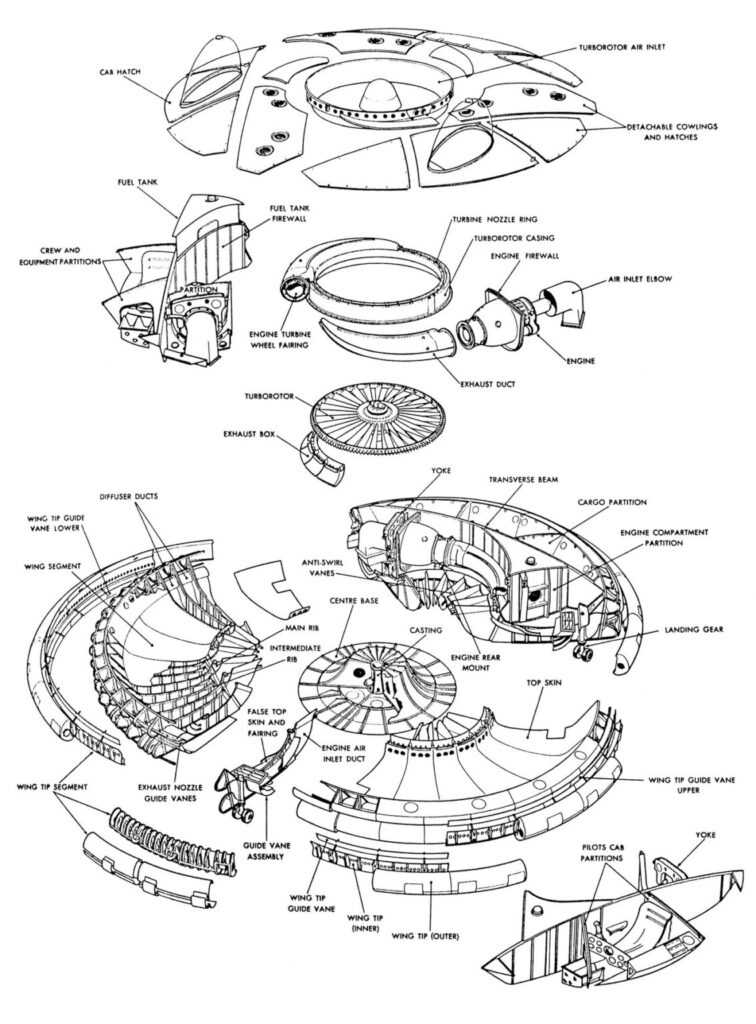
The U.S. Army was on the market for a subsonic aircraft that could be used for both reconnaissance and as a general purpose troop transport for varied terrain. The Avrocar’s VTOL capabilities made it well suited for quick landings to dispense troops in combat zones, and based on Frost’s assertions about its performance capabilities, the Canadian saucer seemed a viable fit. The Air Force, on the other hand, were primarily concerned with an aircraft that could take off and land without runways (due to the likelihood of nuclear war), that could capably hover while operating beneath enemy radar, and then blast off to supersonic speeds when necessary to intercept inbound fighters or bombers.
Research from the Avrocar program suggested to the Pentagon that the VZ-9 Avrocar could meet each of these requirements, so the United States took over funding the program and re-designated it the VZ-9AV Avrocar (“VZ†stood for “experimental vertical flight,†“9†for the ninth concept proposal, and “AV†for Avro).
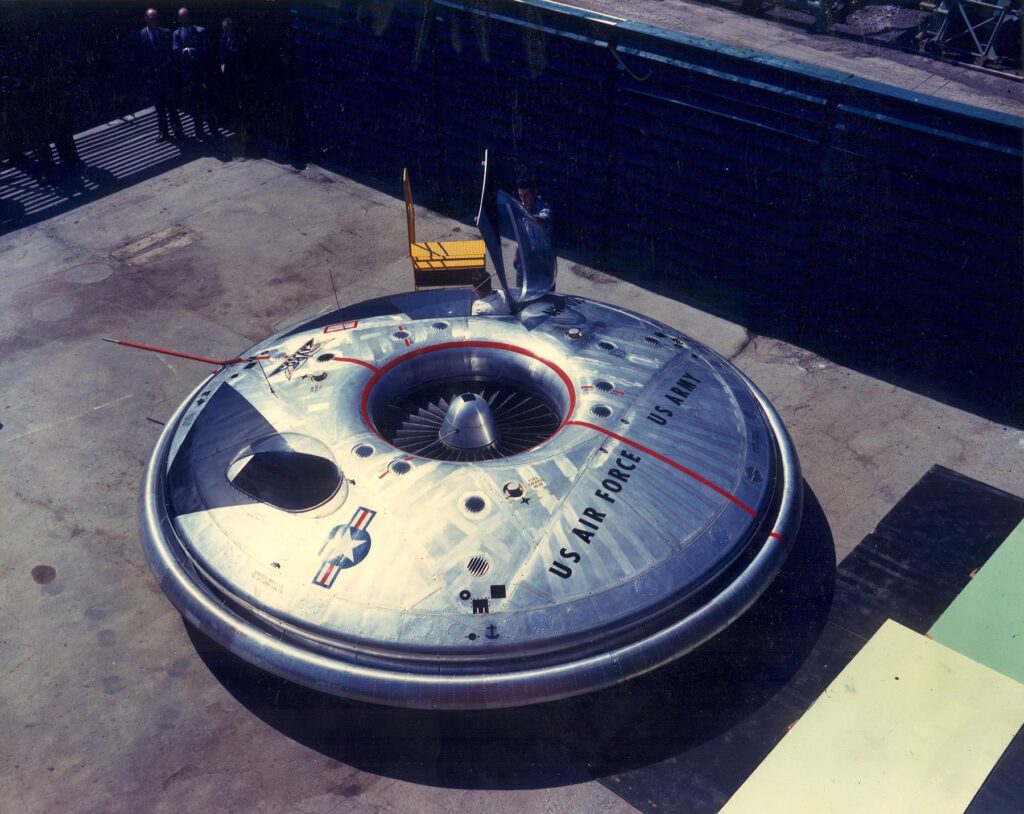
“The flying saucer configuration offers benefits,” Russell E. Lee, a curator at the Smithsonian National Air and Space Museum in Washington, D.C., told Popular Mechanics.
“It’s totally symmetrical, so in theory it should be omnidirectional—if you can figure out how to redirect thrust in an instantaneous and efficient manner. Putting myself in the shoes of the designers in the early ’50s, I would think it would be a viable candidate for further investigation.”
The program seemed promising, and for a short time, it seemed entirely possible that the United States may become the first nation on the planet to begin operating combat flying saucers.
Failing to live up to expectations
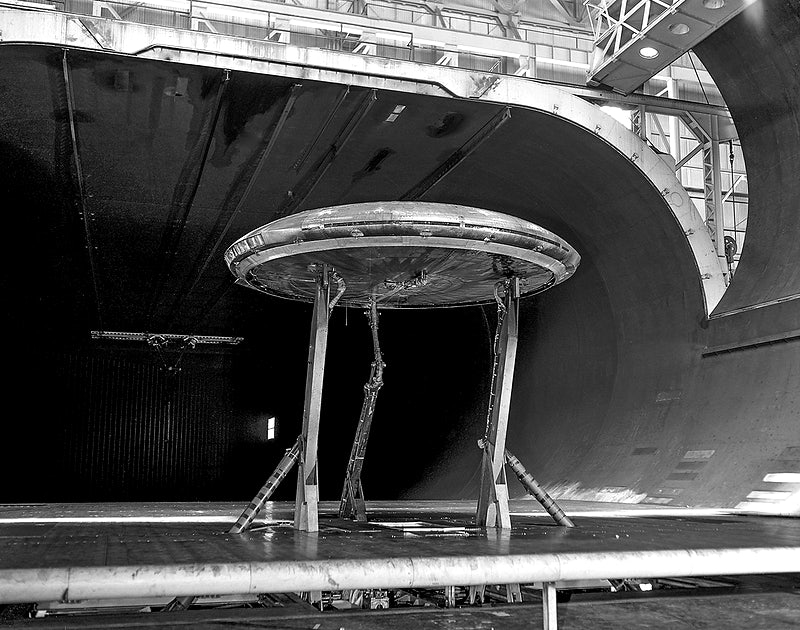
Frost’s Avrocar was to include six turbojet engines, which powered a central turbine that would be used to create a cushion of air beneath the aircraft, often called a ground effect. His team produced a 117-page report outlining their findings and offering some positively optimistic predictions: They believed the jet’s exhaust would produce 20,000 pounds of thrust, which would be bolstered by the ground effect cushion to reach as high as 30,000. Frost himself predicted the aircraft would be capable of speeds as high as Mach 4, with a range of 1,000 miles and an operational ceiling of over 100,000 feet.
These figures would be impressive today, where America’s fastest intercept fighter, the F-15 Eagle, can only achieve speeds as high as Mach 2.5 and has a service ceiling of 65,000 feet. So, it goes without saying that in the 1950s, the Avrocar promised to change the face of air combat as we knew it… as long as it worked. But it wasn’t just fighters the Avrocar promised to replace. Former Air Force officer Bernard Lindenbaum recalled hearing one Army general remark that the UH-1 Huey was to be “the last helicopter the army would buy,” citing the game-changing technology offered by saucer programs like the Avrocar.
The U.S. military agreed to pony up the funding to build two functional prototypes that would put Frost’s claims to the test and in 1959, the first Avrocar powered on its turbojet engines with test pilot Wladyslaw “Spud” Potocki at the stick. The craft was 18-feet in diameter, far smaller than Frost’s intended design, but was built to serve as a technology demonstrator and test bed for further design tweaks. Shrinking the design also meant reducing the number of engines housed within the saucer shape, leaving Spud with only three.

Nonetheless, America’s flying saucer left the ground as planned, but as it climbed above its 3-foot cushion of exhaust, the aircraft became unstable and started to buck like a hubcap oscillating on its rim. Spud was forced to abort the flight and bring the Avrocar back down. Further tests would not fair much better.
Despite experimenting with a multitude of changes, from different control surfaces to the addition of a tail, nothing seemed to stabilize the rocky Avrocar. It never flew higher than 3 feet off the ground, and never exceeded 30 knots, or about 34 miles per hour.
The program was canceled in 1961.
Related: XP-79: THE US FIGHTER BUILT TO RAM ENEMY BOMBERS
America’s flying saucer legacy
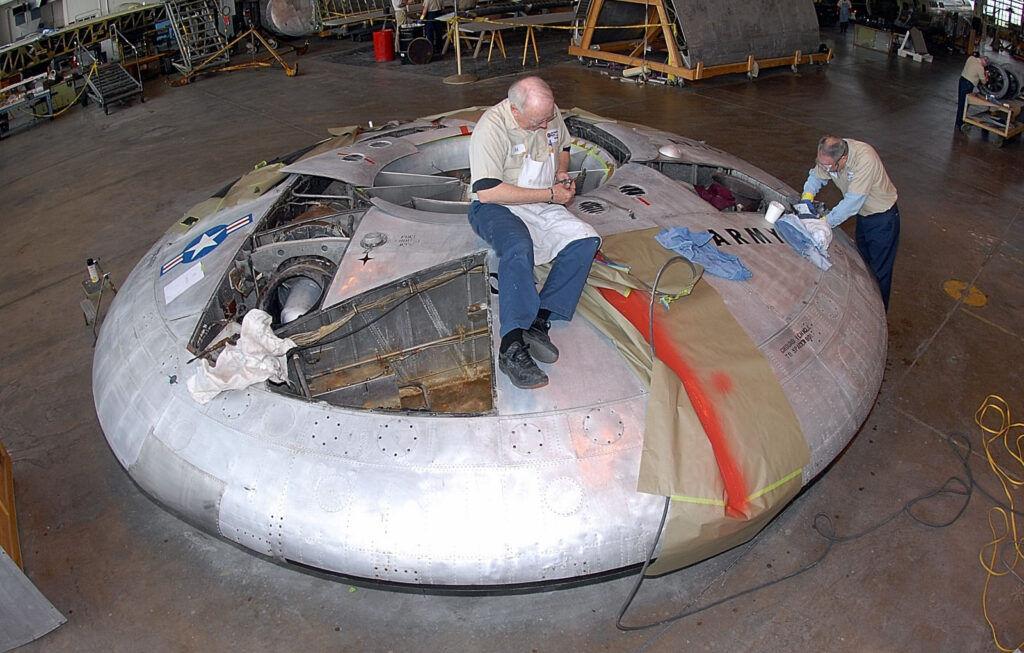
The Air Force’s prototype Avrocar spent some time in the custody of the Smithsonian, until it was given to the National Museum of the U.S. Air Force at Wright- Patterson Air Force Base in 2007. A restoration team set about bringing the old flying saucer back to showroom condition, and it was unveiled to the public in 2008. The other prototype remains in boxes at Joint Base Langley-Eustis in Virginia.

Despite the failure of the Avrocar to become America’s VTOL platform of the future, the concept would go on to prove feasible in future airframes like the British AV-8B Harrier II jump jet and modern F-35B Joint Strike Fighter. The same approach to directing the flow of exhaust as it exits the aircraft to control the direction it flies can also be found in advanced fighters like the F-22 Raptor and Russia’s Su-35 — both of which leverage thrust vectoring of similar principle to dramatically increase their maneuverability.
Its circular shape, while seemingly odd, isn’t that far off from the shape used by reusable spacecraft to manage the extreme friction and heat of reentry while keeping behavior in air currents predictable.
As Robert Braun, a Georgia Tech professor of space technology who served as NASA’s chief technologist from 2010 to 2011, reminded us, “From below, the Apollo capsule looks like a flying saucer.”
This article was originally published 10/14/2020
Related Posts
Sandboxx News Merch
-

‘AirPower’ Classic Hoodie
$46.00 – $48.00 Select options This product has multiple variants. The options may be chosen on the product page -

‘Sandboxx News’ Trucker Cap
$27.00 Select options This product has multiple variants. The options may be chosen on the product page -

F-35 ‘Lightning’ Framed Poster
$45.00 – $111.00 Select options This product has multiple variants. The options may be chosen on the product page

Alex Hollings
Alex Hollings is a writer, dad, and Marine veteran.
Related to: Airpower, Military History
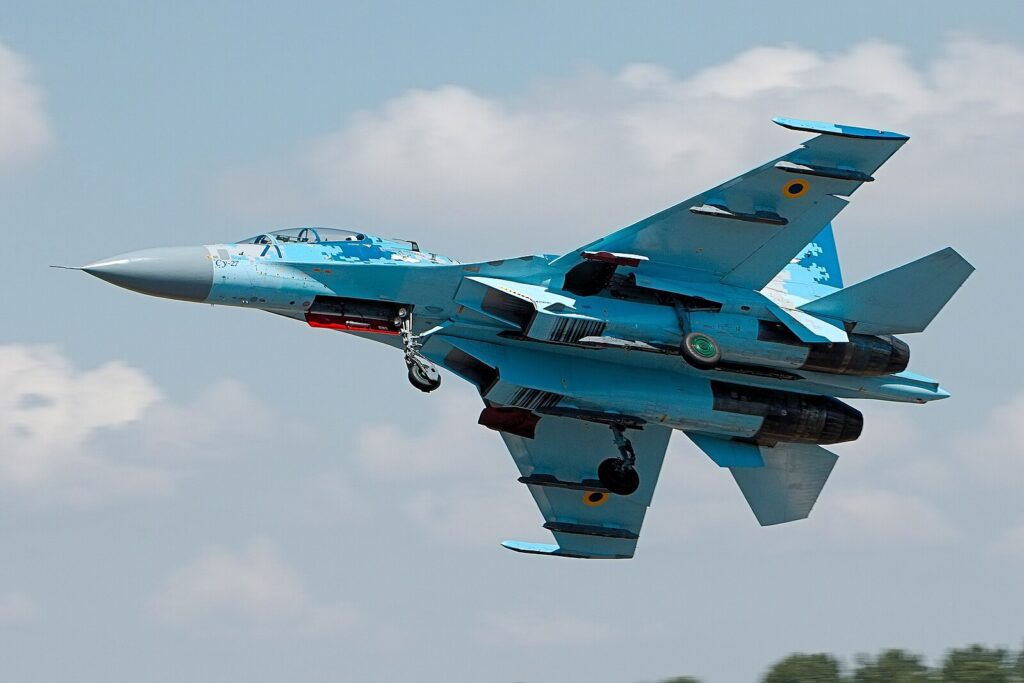
Where do NATO reporting names come from?
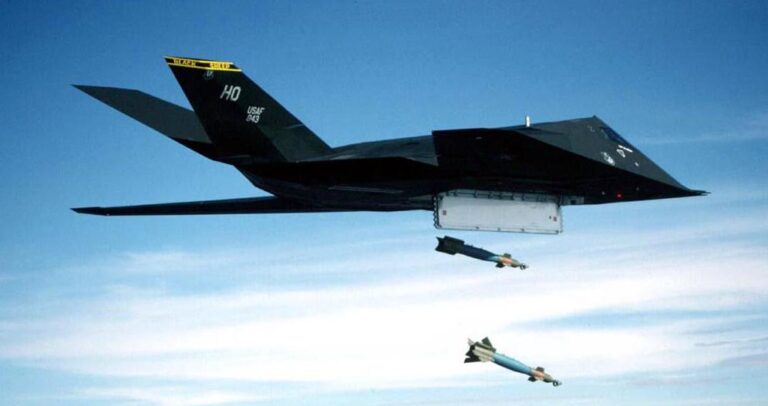
It took more than stealth to make the F-117 Nighthawk a combat legend

Anduril’s mini-cruise missile is like a Hellfire on steroids

Stolen stealth fighter: Why China’s J-20 has both US and Russian DNA
Sandboxx News
-

‘Sandboxx News’ Trucker Cap
$27.00 Select options This product has multiple variants. The options may be chosen on the product page -

‘AirPower’ Classic Hoodie
$46.00 – $48.00 Select options This product has multiple variants. The options may be chosen on the product page -

‘AirPower’ Golf Rope Hat
$31.00 Select options This product has multiple variants. The options may be chosen on the product page -

‘Sandboxx News’ Dad Hat
$27.00 Select options This product has multiple variants. The options may be chosen on the product page
